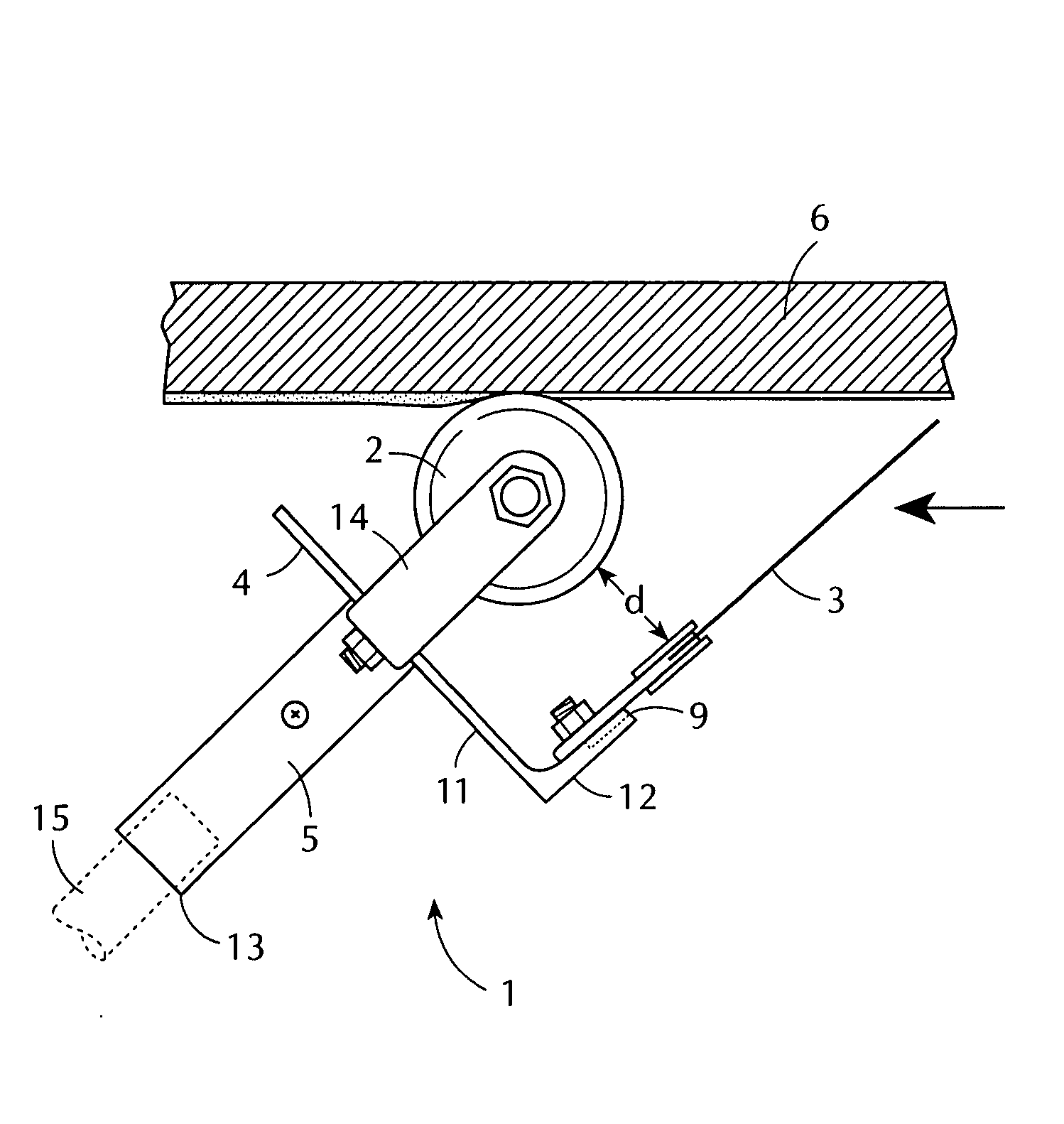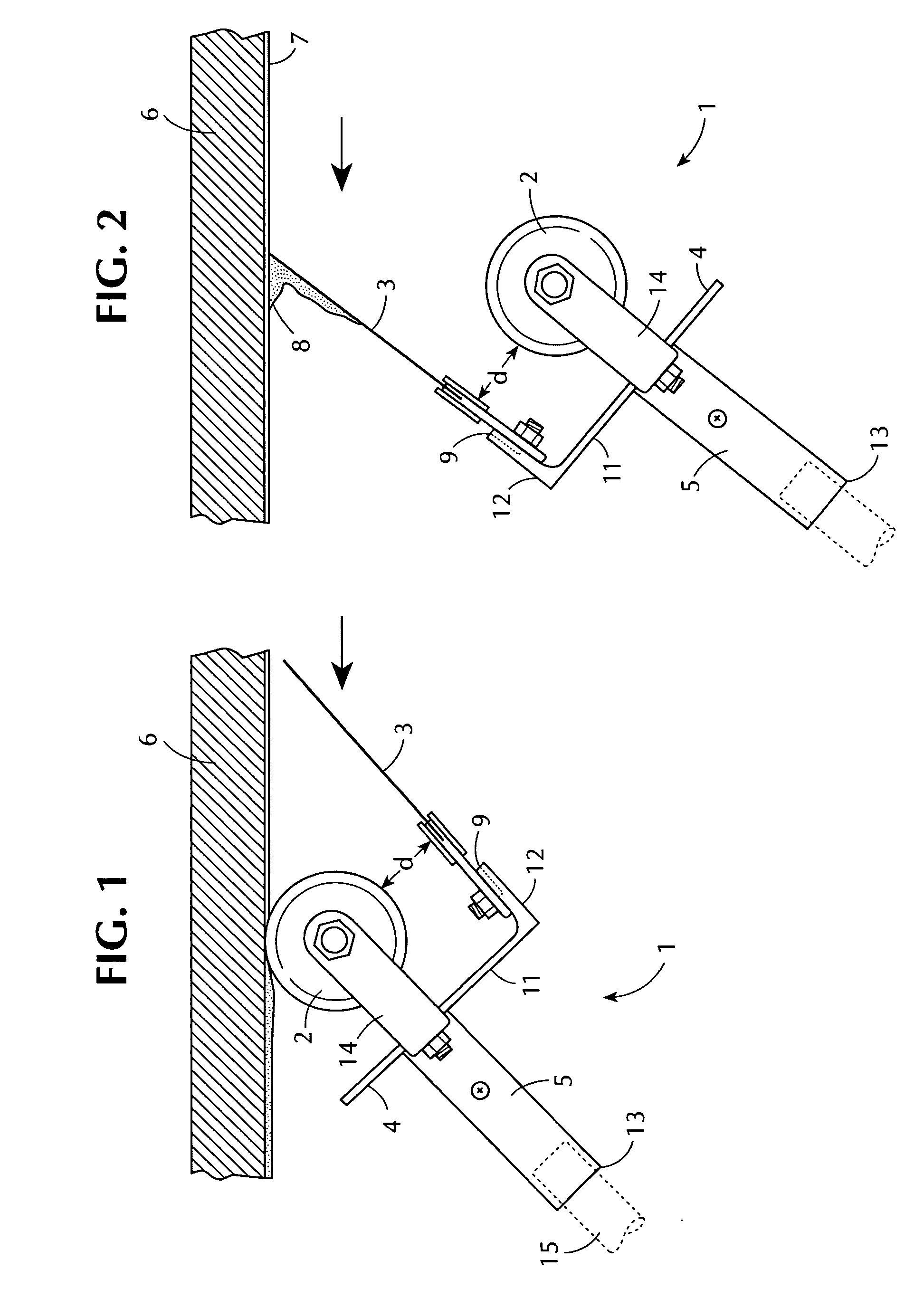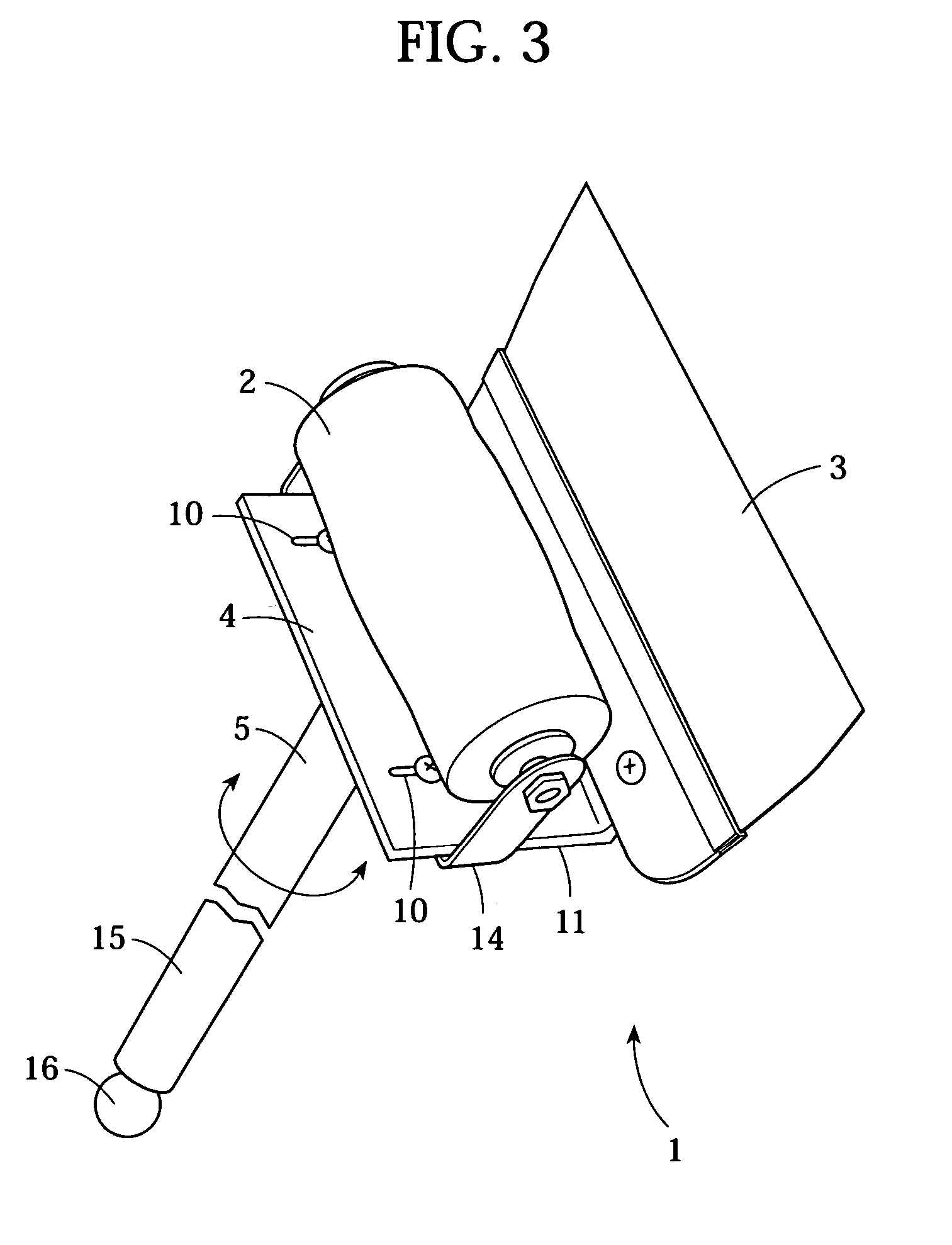Tool for cleaning taped seams of dry wall
- Summary
- Abstract
- Description
- Claims
- Application Information
AI Technical Summary
Benefits of technology
Problems solved by technology
Method used
Image
Examples
Embodiment Construction
[0019] As mentioned above, the present invention is directed to a taping tool for cleaning seams formed when two dry wall boards are installed adjacent to each other on a wall or ceiling structure.
[0020] Initially, Applicant wishes to clearly define some of the terms used in the art. A “seam” is created when two wall boards are installed next to each other. Said seam is generally on horizontal or vertical planes but it may be on other planes as well. A “blade” is intended to mean a hand tool used to apply, spread, shape, or smooth compound in, on, or around a seam, and is also known in the art as a cleaning blade, finishing blade, or taper's knife. The word “generally” is intended to mean “in a general manner, in disregard of specific instances and with regard to an overall picture.” The word “base” is intended to mean “the lower part of an object, including, for example, the lower part of any support member or retaining member for the object.” The word “parallel” is intended to me...
PUM
 Login to View More
Login to View More Abstract
Description
Claims
Application Information
 Login to View More
Login to View More - R&D Engineer
- R&D Manager
- IP Professional
- Industry Leading Data Capabilities
- Powerful AI technology
- Patent DNA Extraction
Browse by: Latest US Patents, China's latest patents, Technical Efficacy Thesaurus, Application Domain, Technology Topic, Popular Technical Reports.
© 2024 PatSnap. All rights reserved.Legal|Privacy policy|Modern Slavery Act Transparency Statement|Sitemap|About US| Contact US: help@patsnap.com










